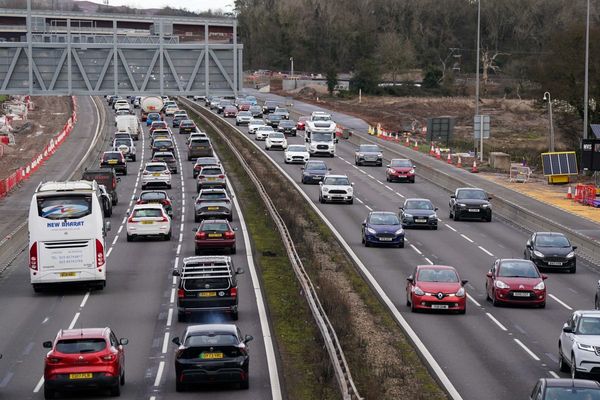
Ashley Clark writes: Cameron Murray is very polite in his reply to Alan Kohler’s “The Great Divide” and optimistic about the levers of the market to respond to wages (“Alan Kohler’s housing essay resonates — but some economic forces remain absent”). In my opinion, whatever levers that exist that keep our economy turning seem mostly made up. Last I checked, wages had risen some but profits by all corporations, banks included, were sky-high. Why aren’t they taxed accordingly to fund more social housing?
It’s time to admit the market for housing has failed. What’s the proof? The fact that young people cannot get in without significant support from wealthy parents. And social housing makes up only 4% of the housing market Australia-wide. In the city of Amsterdam (which has a mayor from the green party), the housing market looks like this: 40% is affordable (only a maximum, fixed rent can be charged to tenants); 40% is middle-income housing, and 20% is private/”free” market housing. This information comes from an episode of the Freakonomics podcast (“Is economic growth the wrong goal?”). Why can’t Australia take steps to do the same?
It’s time housing was considered for the social good that it is: a roof over someone’s head, not an investment vehicle for the rich. Whatever quibbling about councils being to blame is irrelevant. This mess was decades in the making in thinking the “free” market could provide a social good so important. Who was asleep at the wheel? The government was — on both sides, at all levels.
Ian Kemp writes: Murray was going in the right direction with his analysis of interest rates and house prices but stopped just short of the obvious conclusion. I would state his argument as being that house prices are driven by money supply from the banks. What the banks are after is maximum monthly cash flow, and that’s why a drop in interest rates will just see them lend more until your monthly payments reach the maximum of your ability to pay.
When I bought my first house in the ’90s, this effect was capped by probity legislation so that the bank could not lend more than three times my annual income. Nowadays that cap is gone, the gloves have come off, and they will lend up to and beyond a customer’s ability to pay without actually starving. This, surely, is the main driver of prices — what the customer can afford to offer to the vendor.
Jim Feehely writes: I suggest Murray correctly identifies the core problem with housing policy, as does Kohler. But then he ignores that sensible methodology and does the economist thing and makes the analysis all about supply, demand and price.
The clear problem is that there is insufficient affordable housing. That has been caused by reliance on the fallacy that the market should be left to fix what the market — and perverse policy that satisfies the cartel at the expense of the mere citizen — has caused.
Is not the solution more housing built by or financed by government, while leaving the property market to its obsession with overpriced shitboxes? As publicly financed housing increases, the folly of the overpriced shitbox will slowly but surely be solved. That will normalise both the price-income ratio and make the rental market fairer. Further, the renter must be given more power by legislation. Europe is replete with good models for permanent and secure rental housing. No reinvention of the wheel is necessary. That will improve the quality of rental housing and stabilise investment returns.
This will also make redundant the idiotic “logic” of negative gearing: the scheme that rewards those who can buy a second property by penalising all others, including those who cannot afford to buy a house. Negative gearing was supposed to increase the availability of rental housing. So why, after decades of rewarding the lucky and the greedy, do we have a housing crisis?
Colin Edwards writes: Kohler claims that “housing is a cartel of the majority, with banks and developers helping them maintain high house prices with the political class actively supporting them”. Yet according to Murray: “This cartel is broadly in support of removing council regulations, which apparently make homes cheaper.”
Our experience here in Western Australia is that the Labor state government has favoured cartel property developers by legislating to override council regulations. Then the developers can build expensive high-rise apartments almost anywhere. I see little evidence that this is making homes cheaper, except perhaps those homes now overshadowed by the new high-rise next door.
The YIM and NIM of housing
Adam Ford writes: Re “Is the YIMBY movement progressive or conservative?” I’m neither a NIMBY nor a YIMBY, because that’s fairly obviously a stupid dichotomy that sounds like it was erected by somebody while watching Play School, and suited only to shouting at people on social media.
Overall you hear people who style themselves YIMBYs advocating for some civic scale neoliberal evils — every regulation that prevents any given approval, even if only for a matter of weeks, is evil and needs to be dispensed with, and more often than not you’ve got people with no experience of the planning process dismissing the universally acknowledged aspects of planning regulation that actually create a “better” city.
Better in this instance is in no way opposed to “much denser”, but anyone with any actual real-world experience of the process knows that the number of developments that never proceed annually because of — for instance — heritage could house about an extra 100 people nationally, but we’d have done real violence to our culture, our heritage and our cities by blanket removal of all the relevant regulations in the manner these people wish to.
Not that long ago we had Crikey complaining about the heritage listing of a car park which didn’t even have a development application on it, never has had, has never had any such proposal rejected because of heritage, and if such a proposal were to emerge it would be a simple enough thing to get approved with some fairly tokenistic incorporation of elements of the current structure. Sure, wave your fist at the clouds if it makes you feel better, but you won’t have progressed one iota towards increasing housing supply while doing so.
The lack of sophistication and rabid assertion of correctness based solely on feelpinion is really the debating hallmark of both ends of the artificial binary, and frankly the people at all such extremes ought to automatically exclude themselves from debate. Because if you can’t analyse the problem effectively, the solutions that you derive are never going to be effective either.
Guy Rundle writes: In his article on the politics of YIMBYism, Benjamin Clark suggests that I believe heritage and zoning reform are a dead end, and that we should build new cities. That verges on a caricature of my position.
I think heritage matters in its own right, and not just buildings but whole suburbs of Victorian, Edwardian and Deco streets. I and many others will put a lot of energy into keeping them. Changes to zoning are fine; I’m less fussed about height limits than many are. New cities? I suggested that the government aggressively develop the old industrial “rip” that starts at West Footscray and runs through Braybrook and Brooklyn. High density, but with good design, variety, architect-designed spaces, and place anchoring heritage — some factories etc — preserved. And new cities within the existing urban web. All possible while preserving some of the most beautiful and distinct neighbourhoods in the world.
Too many YIMBYs (not Clark!) are quants with no aesthetics and old Sydney Uni communist burnouts with a hatred of old stuff.
Paul Tucker writes: Really tiring of these undergraduate pieces about housing that pointedly refused to address demand, i.e. immigration. When I hear a YIMBY criticise the ridiculous number of people entering the country at the moment I’ll be convinced they are just more than useful idiots for developers.
Sandra Bradley writes: In the past 18 months across two countries, I have sold a house, bought a house, lived in two apartment buildings and am now staying with friends trying to decide where to spend the rest of my life and whether to rent or buy again.
With each move, I contemplate whether I want to live in a YIMBY neighbourhood or a NIMBY one. Each has its advantages and disadvantages.
The best place I have lived in so far has been a seniors apartment building (55+) of three storeys with a community room, internal post boxes, internal garbage collection, its own café, library, activities, and located a short distance from healthcare, groceries and other needs. The apartments are rented, not bought. The building is owned by a corporation. It is not without its problems but its residents know and care for each other in their one- or two-bedroom spaciously designed units fitted for people who are getting older. There is a low transience rate as they can’t be rented out for Airbnb. The only reason I left was because the average age was 75, not the 65 I anticipated. This indicates a need for more of these types of buildings for people 70+.
What I am witnessing, however, is that for every single-storey house with street-level access being torn down, two-storey duplexes are being put up. These duplexes are not what baby boomers want or need. You want us to move out of our houses? Then make the type of accommodation we can live in until the end of our lives. So, this is me being a NIMBY. If you build the type of housing we need, then I’ll be a YIMBY.
Please don’t consider medium-high-density buildings only in terms of skyscraper apartments and duplexes because you think these are the only things that are profitable. Smart developers can make a profit from any building design for any clientele.
I am becoming increasingly disturbed by people’s hidden biases against those of us who can’t buy $1-$3 million homes in any city. Not all of us need “social housing” or are on poverty street, but we do need sensible accommodation to see out the rest of our lives in neighbourhoods that cater to older people.







